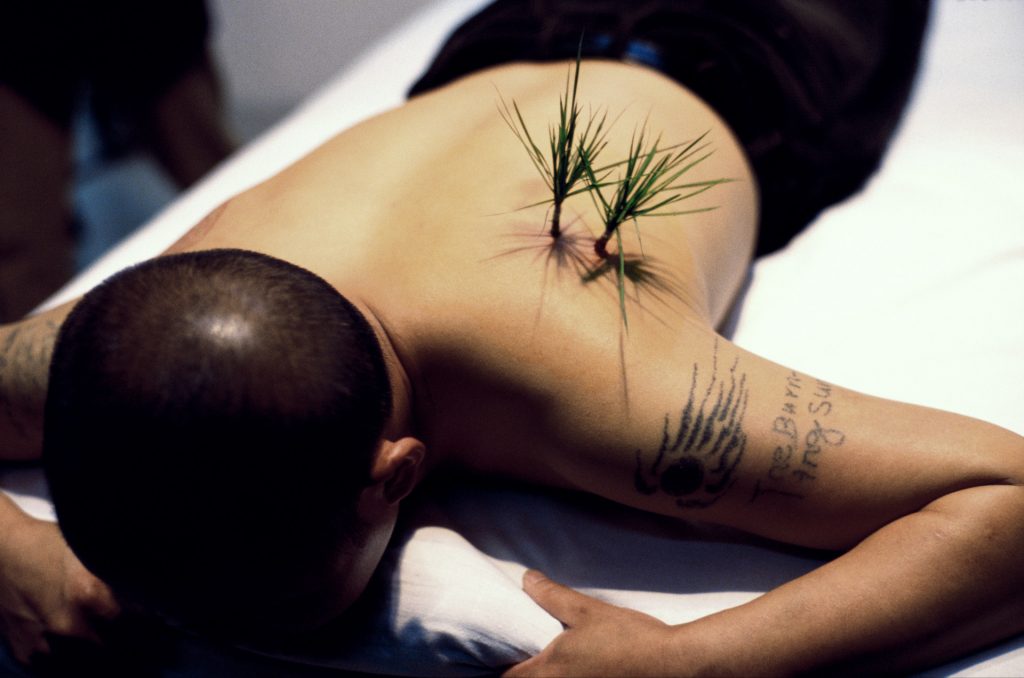Photographic print (2023) from the eponymous performance in 2000
“The human being no longer sees himself as the centre, the decider and measure of all things, imposing his will on an inert nature. The work emerges from a symphony that aims to be both human and non-human.” This is how Guillaume Logé explains the concept of the emerging “symbiotic perspective”, which he sees as breaking with the linear anthropocentric perspective inherited from the Renaissance. This concept was developed in a book 1 and an exhibition featuring some twenty artists working with living matter, including Michel Blazy, Clément Borderie, Edith Dekyndt, Tomás Saraceno and Yang Zhichao. It’s the latter’s work, the result of a performance, that we’ve chosen to highlight. What could be more eloquent than the vision of a back bristling with two shoots of grass?
The artist’s body, having had the two cuttings surgically grafted onto it, is here visibly in pain (“As we can assume the plant is”) “and ends up rejecting the grafts”, explains the exhibition curator, underlining the importance of the work, signifying the impossibility of hybridisation based on “the goodwill of an all-powerful human” and the impasse represented by such an ecological vision:

In the words of Yang Zhichao: “The living are not malleable at will”, the dream of symbiosis here turns into a nightmare…. A mutant of an illusory biopower, Yang Zhichao invites us to integrity, and warns us against the temptation to transgress the animal/plant kingdoms too artificially.
Wild Renaissance. The Art of the Anthropocene, ed. PUF, 2019
“Renaissance sauvage: the symbiotic perspective”.
Galerie Jousse entreprise
6, rue Saint-Claude, Paris III
Until January 13
